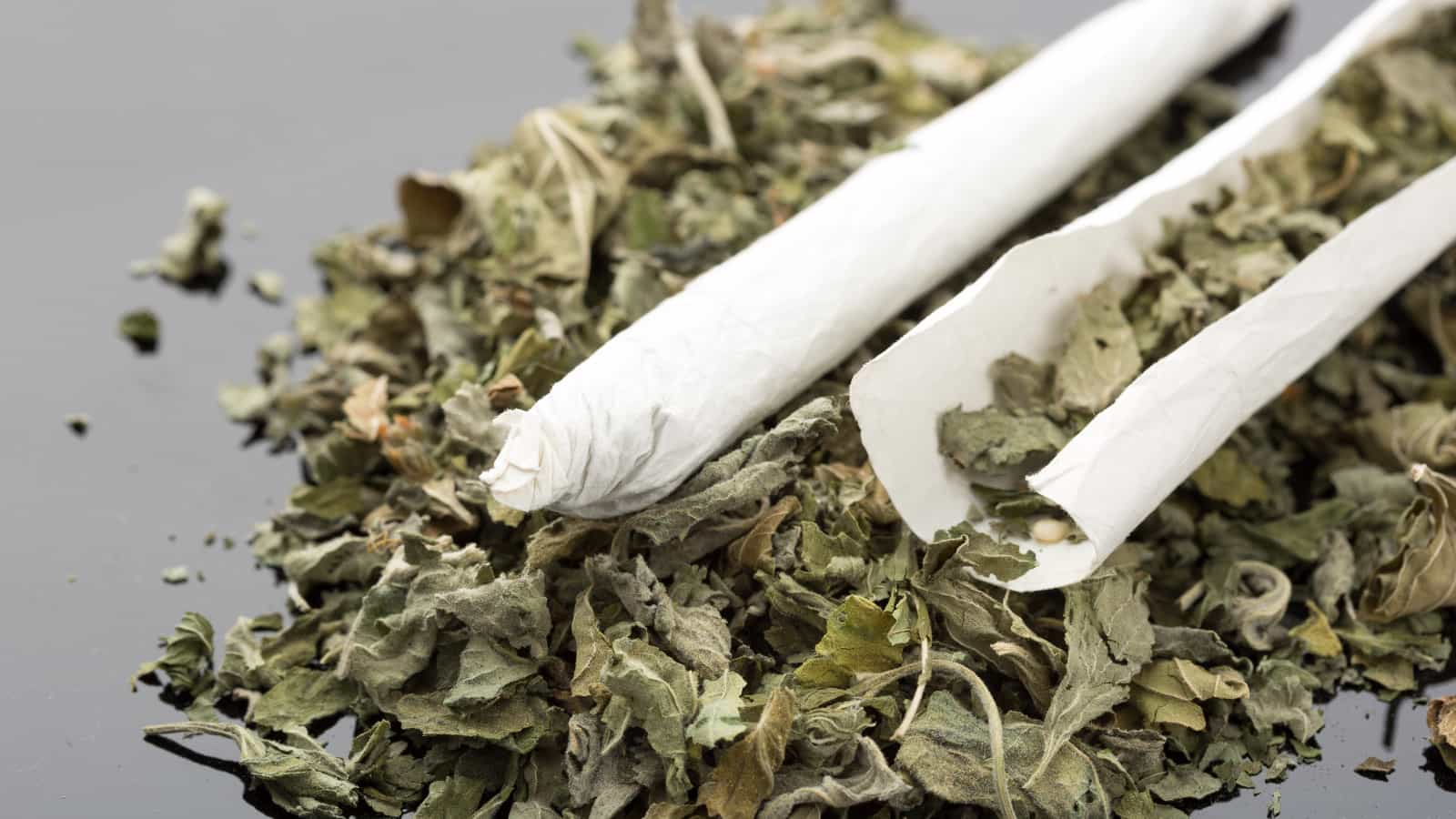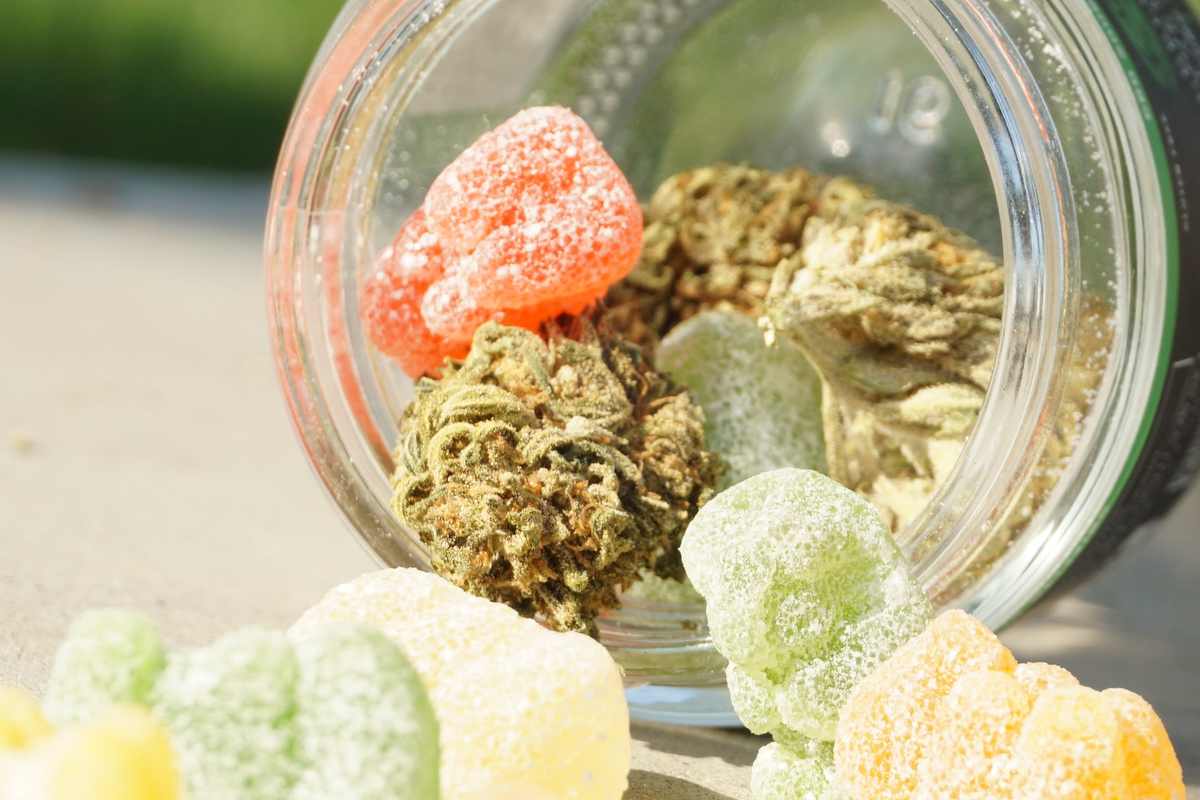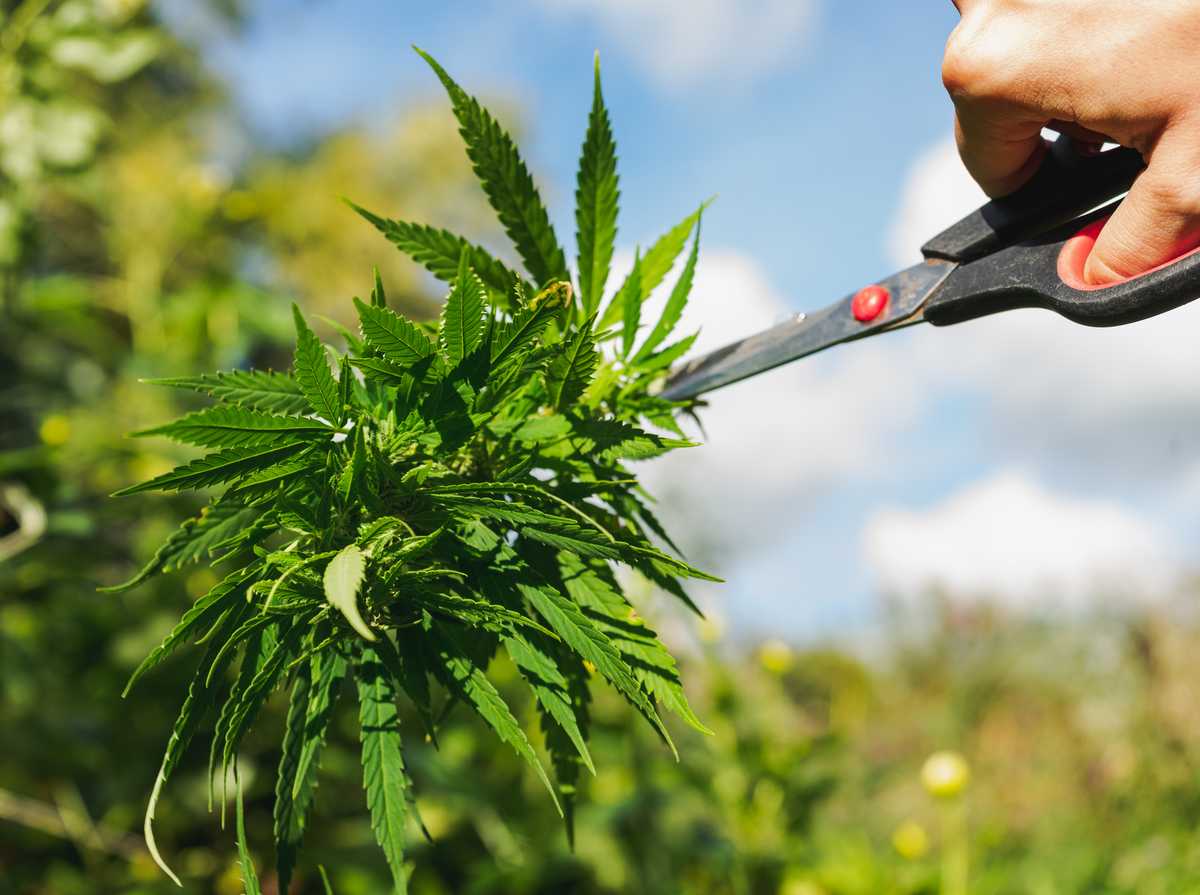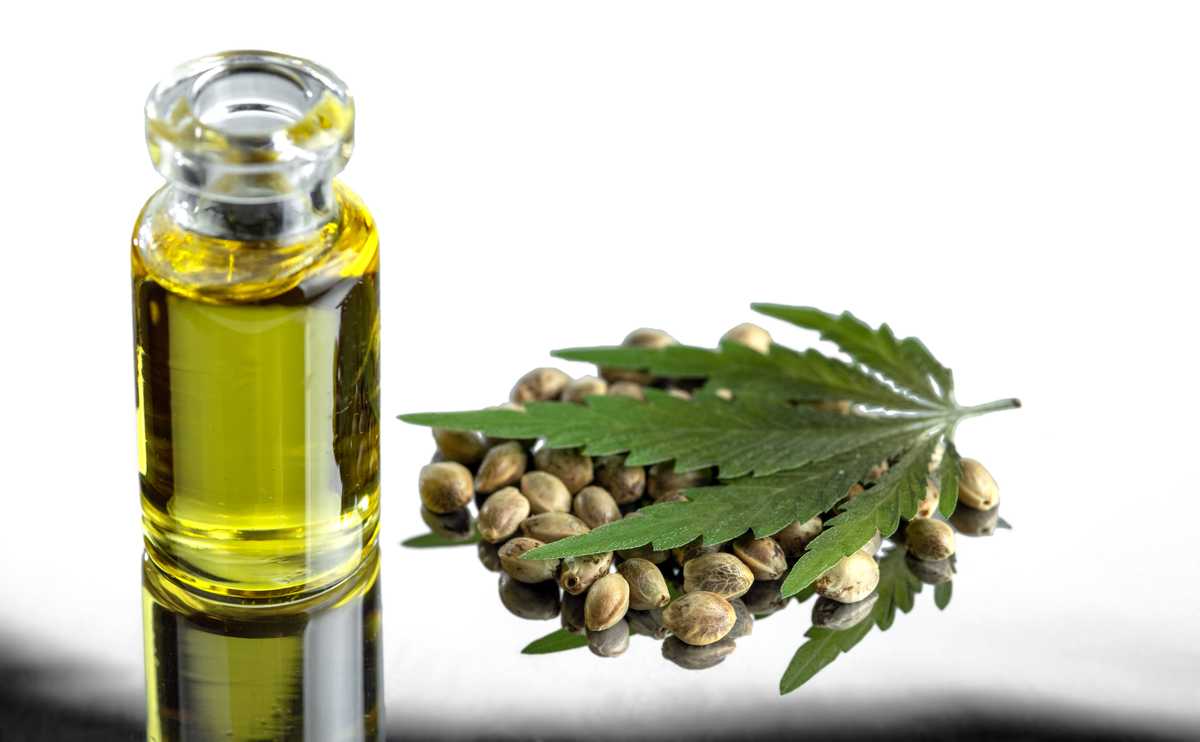
How To Decarboxylate Cannabis For Edibles
Known informally as “Decarbing”, this process is responsible for the high you receive when engaging in weed smoking. The process of decarboxylation, or decarbing, requires some expertise and easy to acquire materials for proper completion. Before explaining the entire process, let’s examine some terminology about the herb’s elements.
THC is a chemical present in marijuana. It is responsible for the euphoria that weed gives its users, thanks to a flower laced with the acid form of tetrahydrocannabinol or (THC). This acid-filled compound in flowers is known as THCA. Now, as the marijuana flowers dry, tiny traces of the THCA mentioned are transformed into THC. This, however, is barely enough to provide the hallucinogenic effects that you are looking for as a smoker.
So, where does Decarbing come in? Well, unless you want bland tasting herbs and are willing to inhale smoke with no effects, these herbs need some heat. This heat, be it through smoking or vaporizing, is what will unleash the plant’s full mind-bending capabilities. No weed-smoker will be content with less-potent herbs, and especially not when they are in the form of edibles. Decarbing is a guaranteed way to make sure you are capitalizing on the mind-blowing effects that your favorite plant can bring.
Knowing when to Decarb Weed
As mentioned earlier, Decarbing this plant is essential for anyone seeking that unrivaled high that comes with smoking weed. However, for medical usage, unheated herbs may prove quite beneficial for relieving nausea and inflammation in your tummy. Also, not everyone is looking for the mind-altering effects brought about by smoking it. Now that we have that covered let’s look at when or why you may need to decarb your weed.
If you plan on lacing your drinks, smoothies, or cookies and brownies (edibles), it is a good idea to do some decarboxylation.
Before suspension or infusion to create the medical alternative of the drug
Decarb when you plan to add a mixture of the same to your smoothies or edibles
If you create your homemade extracts, either for medicinal purposes or recreation, be sure to decarb for more potent applications.
Do you Decarboxylate CBD?
For starters, CBD, or Cannabidiol, is not a psychoactive drug. If you don’t know of its other uses, it is used in oils and edibles to create that numbing, relaxed feeling we all love. That being said, you may not get a high from the naturally available CBD found in plants. This, like THCA, is found in smaller amounts as well.
If you are familiar with raw extracts, this is where that knowledge may be helpful. Once CBD crystals are formed due to extraction, they can be heated through smoking, vaporizing, and a process known as dabbing to get the effects that you need. Other users have been known to perform a slow decarb using a hot beverage like coffee or tea. If you do manage to decarboxylate with intense heat, the effects may be health beneficial.
This process turns the compound into a pain management drug and a stress-reliever. Decarboxylation makes it possible for CBD to mellow you out.
How to Decarb Weed
Remember, decarboxylation is any process of heating that will cause a chemical reaction in your hemp. Therefore, it would be safe to assume that as you light up your joint or marijuana, the process of decarboxylation is already taking place. This is the most ubiquitous form of the process and possibly the cheapest. So, how do we decarb this stuff in the comfort of our homes? You will need access to a kitchen for this. No need to panic. It only requires the use of your oven for a few minutes, with no risk of explosions or unnecessary heating.
If you have a fully functioning oven, decarbing your weed is tantamount to having tantalizing and mood-altering edibles. Examples of the uses of this transformed (or activated) weed are:
- For infusion into fats, drinks, and smoothies
- Lacing your brownies or as a condiment to spice up your cooking
- You may consider it as an ingredient for your alcoholic drinks
Proceeding with caution, below is a chart displaying a few of the methods you would use to heat your herbs.
Plants with high CBD strains decarb slightly slower compared with their counterparts with high Tetrahydrocannabinol content. The longer it takes to decarb, the more likely you will lose valuable nutrients in your weed. Think of it as cooking any of your favorite meals. The more you cook that healthy variety, the more likely you are to drain it of all its vitamins. A quick in- and- out from the oven, and you are all set. Terpenes may be removed from your favorite herb if you cook for too long, under low temperatures. These are responsible (apparently) for helping with stress-alleviation and self-awareness. The following are crucial to get you headed in the right direction
What you need to get started
- Some ground cannabis- Any pieces should be of a considerable size
- A baking tray with lifted edges
- Baking paper will come in handy too
- A wooden cooking spoon
- Thick oven gloves and an oven thermometer
How to Decarboxylate Marijuana
Ready to being decarbing? By default, anything that is cooked in an oven needs your undivided attention. Specifically, when it comes to temperature variations and such, there is a pressing need to keep an eye on the stuff you are baking. These changes are responsible for whether your edibles will be potent. If you are familiar with baking cakes in the said oven, you know that leaving the oven door ajar longer than necessary interrupts cooking. For consistency in decarboxylation, you need to ensure that heat escaping the oven is limited. On that note, you may want to try the magical butter machine if you are not so oven-inclined. However, seeing as we are in the kitchen right now, let’s observe the following step-by-step guide to preheating and laying out your oven; pre-decarb.
- Preheat, the oven like you would when baking cookies. The setting should reach 240* Fahrenheit, equivalent to about 115 * Centigrade
- Using your baking paper, cover your baking pan evenly
- Remember the thermometer we highlighted earlier? Have that in hand to check on your internal oven temperature. Different types of weed require different temperature readings
- The ground cannabis should be spread evenly across the pan- this will determine that ALL the marijuana is cooked to the same consistency
- After twenty minutes of heating, examine the herb for changes in color. Do the same after another ten minutes. During this time, pay close attention to the look of your weed- it’s probably changing its shade to a lighter hue- consistent with toasting.
- Once it changes from a sharp green to a brownish (cooked) look, it is probably ready to leave the oven
As you can probably tell, heat is the most important factor in getting that much-needed high. Keep that in mind, and decarbing via an oven should prove quite simple (and affordable).
But wait, we are not done yet. More decarboxylation options are coming up. Read more on how to perform the same for Butane Hash Oil.
How to Decarboxylate BHO
BHO, or butane hash oil, is an extract from the raw material cannabis. According to experts, this is the simplest form of hemp to decarb. The materials needed are of the basic baking variety, including the quantity of the oil you’d like to heat.
What you need to get started
First off, like the equipment used for CBD, you need a working oven. Second, it is good to have a baking tray with lifted sides or edges (bevels). Third, you will require some baking paper, usually made of light material. The fourth item is a pair of fluffy and heavy oven gloves and, last but not least, a well-calibrated oven thermometer.
Directions for Decarbing BHO
As you would with CBD decarbing, preheat your oven to a comfortable 240* Fahrenheit. The baking paper you acquired should be placed firmly on your baking pan. Your hash crumbles, wax or shatter, can be placed dead center on the pan. Proceed to bake this mixture for approximately twenty minutes, paying close attention to any inconsistencies. Once the budder is simmering, let it sit for a while to cool.
It is now ready for consumption. Once it lets off some heat, it becomes easier to manage and mix with edibles and other consumables you may have in mind.
How to Decarboxylate Cannabis Oil>h2
A word of caution. Remember, we do not want anything that resembles a meth-lab fiasco taking place here. Decarboxylation is a safe (and legal) approach to prepping your favorite and natural drugs for recreation or medicinal purposes. That being said, these varieties, which include RSO or CO2, should be heated in a controlled environment. More specifically, using cooking oil for cooking this stuff should not involve any simmering of the said oil. We do not need to imagine the damage that would occur if the environment became volatile. Here are the essential materials to facilitate this process.
- A large container used for cooking oil or a readily available soup-cooking pot
- Affordable cooking oil- essentially, any off-brand or generic oil will do
- Portable heat-proof container to store the cannabis oil
- The preferred amount of cannabis oil you plan to decarb
- A handy candy temperature gauge
- A spatula or a small, stirring spoon
Directions for Decarbing Cannabis Oil
- Immerse a small, heat-proof container into a large cooking oil pan
- Moderately heat the cooking oil to a stable 240* Fahrenheit
- Remember to utilise the candy temperature gauge to observe and maintain the right heat
- Use the stirring spoon to separate bubbles
- As bubble production begins to subside, get ready to remove cannabis from the pot. As the simmering gradually decreases, it creates the optimal effect needed for that mellow feeling you need.
How to Decarboxylate Kief or Hash
For those who love a light condiment in the form of a spice, Kief is the way to go without being overzealous on tastes. When cooking for friends and you would like to spice things up, this is an excellent option to explore. Of course, less is always more with any mood-changing substance, so measurements should vary between one tsp to anything less.
What you need to get started
You will require some nifty oven gloves, a well-calibrated thermometer, a baking tray with slightly beveled edges, some baking paper, and a handy cooking spoon- this should preferably be a wooden one. Once the setup is complete, your Kief is ready for decarboxylation.
Directions for Decarbing Kief
- Preheat your oven to a stable and comfortable 240* Fahrenheit
- Have that oven temperature gauge close at hand to give you adequate readings of the heat setting inside your weed-cooking chamber
- Place your baking paper evenly on the baking pan
- Spread your Kief across the baking pan- Do not place them too close to each other, or on top of each other
- The Kief should be heated for between fifteen to twenty minutes- Be sure to mix it around using your handy (wooden) spatula
How to Decarboxylate Cannabis Using a Sealed Bag
Suppose you don’t have enough time to wait for an oven to preheat or would rather something that doesn’t involve simmering oils and fully-heated ovens, use a sealing bag. This method is undoubtedly the simplest way to decarboxylate your favorite recreational drug (and its extracts).
So how would you go about doing those as mentioned above? Between preparations to completion, the entire process should take approximately ninety minutes. Here are the basic steps:
- Throw some of your favorite hash or Kief into a cooking bag (sealed bags safe for boiling foods in high heat)
- Immerse the bag filled with those mind-altering plants in a pot of boiling water. Do not let the water boil until the pot is dry as you would with rice or vegetables.
- After ninety minutes of cooking, you can remove the bag from the water and let it sit before letting the hemp out of the bad
Tips for Properly Decarboxylating Cannabis
Heat produces or activates your herb for optimal results. This heat can be factored in as you light up with your friends or in the steps outlined above. Whichever way you choose, moderate or controlled temperatures will ensure that decarboxylation does produce optimum results.
The alternative is that you will have a bogus product waiting to be destroyed and discarded. Just to highlight the steps involved. Heating your hemp less than the required amount will give you a half-baked experience (pun intended).
Therefore, heat the ovens to the recommended temperatures and follow how to maintain the correct heat settings. Additionally, with excessive heat, the herbs will lose their natural oils, and possibly, the tetrahydrocannabinol will dissipate too.
Longer durations and lower temperatures make for happier and higher users. Okay, on a serious note, decarbing with a steady temperature for a longer duration, as opposed to vice versa, will produce the results you so desire.
Optimal boiling points are between 246.2 * and 435.2 Fahrenheit. The molecules and compounds can be better manipulated at these temperatures. However, to fix your weed correctly, you need to decarb it at temperatures hovering below the 240* mark.
Your oven may prove to be a hindrance to your decarbing process. If you have an older or overworked oven or gas-heated, you may want to make use of a heating stone.
The idea is to provide a consistent temperature for the plants under decarboxylation. Placing your baking pan on top of the stone will give the consistency that you require.
How to Decarb Weed like an Expert
Not for amateurs, but still, who says you need a degree to reach the clouds. For the more daring and refined smokers out there, it may be that you need other steps and elements to highlight your weed usage experience. If you are a weed connoisseur with an acquired taste for the drug, below are a few cannabinoids and taste and scent molecules. These may come in handy when you decide that you need to get the most out of your favorite drug of choice.
Phytocannabinoids
These compounds are primarily a by-product of marijuana. They exist in variations, and those who plant and use the products get to enjoy different samples of these cannabis strains. Below are a few of the most common cannabinoids and perhaps the most relevant for any weed- decarboxylation guru.
THC or Tetrahydrocannabinol
This is the most common ingredient or element in Cannabis. It has a healthy boiling point of 314.6* Fahrenheit. It is an ecstatic, pain-relieving, seditious, antioxidant, and nausea-relieving drug.
CBD or Cannabidiol
It, in itself, does not give you a high- it is derived directly from the hemp plant. It has a relatively high boiling point of 365* Fahrenheit. As a drug, it includes anti-inflammation properties, anti-psychotic uses, anti-oxidation, and antispasmodic. It is also a pain reliever while helping to reduce spasmodic muscle reactions.
CBN or Cannabinol
Not to be confused with CBD, the two have very similar spellings, but they offer varying benefits. CBN has a boiling point equal to its cousin CBD, of 365*. Its properties range from oxidization elements to being a numbing medication or sedative and a drug for fighting off infections.
CBC or Cannabichromene
Perhaps the highest boiling point of all the extracts mentioned above has a boiling point of 428* Fahrenheit. It falls under seditious, anti-infection and fungus relieving drugs.
8-THC or tetrahydrocannabinol
This main ingredient of the much-loved hemp has a boiling point of between 347 and 352.4 * Fahrenheit. Intrinsically, it has less mind-altering capabilities than its relative THC- 9 and its nausea-reducing drug.
THCV or tetrahydrocannabivarin
With a boiling point of less than 428* Fahrenheit, its intrinsic values include palliative properties and ecstasy-inducing properties.
Terpenes- Essence of Cannabis Elements in the Form of Oils
Terpenes are a significant ingredient in cannabis, and they are responsible for the nose-raising scents found in your favorite hemp.
These variations give weed a distinct smell every time you light up a different strain or brand. Similar to cannabinoids, they have a range of boiling points that have to be adhered to to maintain a healthy consistency of terpenes.
Read more about cannabis terpenes in Australia here!
The main oil components of this loved drug are somewhat similar to cannabinoids in terms of their medicinal values, specifically:
Myrcene
It’s palliative and a nausea-reducing drug that works to reduce infections while providing anti- mutagenic benefits. The boiling point range is between 330.8 and 334.4* Fahrenheit.
Read more about the Mycene terpene here!
Caryophyllene
True to the nature of these oils, it has a scent that resembles that of pepper. The boiling point is set at 246.2* Fahrenheit. It is, incidentally, an anti-malarial drug, as well as helping with nausea and gastric discomfort.
Read more about the Caryophyllene terpene here!
Limonene
It has a boiling point of 350.6* Fahrenheit and a spicy scent similar to citrus. It is also anti-mutagenic, helps alleviate depression, and can its qualities also help in boosting the immune system.
Read more about the Limonene terpene here!
Linalool
This component has anti-depression and calming properties with a flowery aroma and a boiling point of 388.4* Fahrenheit. These medicinal properties also help with anesthesia boosting the immune system.
Read more about the Linalool terpene here!
Cineole
It has a boiling point of 348.8* Fahrenheit and helps with cognition and creating physical stimulation. It also helps fight infections, nausea viruses and aids in increasing one’s blood flow.
Pinene
With a boiling point of 312.8* Fahrenheit and a pungent pine smell, this essential component helps with breathing, nausea issues, and infections. It also provides stimulation benefits.
Read more about the pinene terpene here!
Terpineol
It has a boiling point slightly over 422* Fahrenheit; it has a woody type of smell. It can be applied as a sedative, and it also helps fight the world’s number one killer disease, malaria. Other properties include the fact that it’s an antioxidant and antibiotic at the same time.
Read more about the terpineol terpene here!
Borneol
One of the most basic of all the components is that it helps with infections and has a set boiling point of 410* Fahrenheit.
Carene
Another fundamental component is Carene, offering anti-inflammatory benefits with a boiling point of 334.4.* Fahrenheit.
Read more about the Carene Terpene here!
Flavonoid and Phytosterol Components of Cannabis
Elements that provide the flavor in your cannabis are found in its molecules, contrary to those that provide the scents. These flavors give all the various brands different tastes, which at times can be pretty bitter. It is probably a better approach to decarb your oils, as opposed to the flower. This will help reduce the sour taste of cannabis during usage. Though these elements vary in terms of flavors and taste that they bring to their users, the intrinsic health values are more or less. Let’s take a look at these properties.
Apigenin
It has a healthy boiling point of 352.4* Fahrenheit and is an estrogen drug, and can be used to anesthetise, and has anti-nausea properties. Being a flavonoid, it has a very bitter taste.
Quercetin
Boiling points hover around 482* Fahrenheit mark, with a sour taste to it. It’s beneficial for cytotoxic or anti-cancer remedies and works to fight off viruses—anti-mutagenic and anti-oxidant benefits top-up Quercetin potential use.
Sitosterol
This component has a 273.2* Fahrenheit boiling point and inlcudes anti-inflammatory benefits.
Fancy Recipes Using Decarboxylated Cannabis
The most common use of the decarboxylated stuff is to lace oils and butter. You will be happy to know that other edibles and soups, including tinctures, are not left behind. Use these exciting recipes to bring some of your unique concoctions to life with decarboxylated cannabis.
How to Make Cannabutter
Cannabutter is the most common and versatile complement for sauces and baked foodstuff. It forms the basis for any cooking that involves marijuana. Making Cannabutter is easy using a few simple steps.
How to Make Cannabis-Infused Coconut Oil
You can use this as an alternative to animal oil or butter. The uses vary too, so it’s worth considering using cannabis-infused oil for topical purposes.
How to Make Weed Tea
What can be more exhilarating than having an afternoon cup of tea while getting high without the effects of smoke? Making weed tea is quite simple.
How to Make Cannabis Almond Milk
If you are a vegan or just prefer the DIY type of approach to what you ingest, this is a healthy option for you. Cannabis almond milk can also be applied to other recipes.
How to Make Cannaflour
Get to baking with some high-inducing flour. Making canna flour is simple and you can store it for exciting future recipes.
Tips on How to Make Homemade CBD Lotion
For topical uses, this type of lotion has medicinal values and should be made using decarboxylated oils. All you need to do is infuse your favorite lotion, using some simple steps.
This article was researched using these and other references:
- Cannabis Decarboxylation - Science Direct
- Converting THCA to THC
- The study of the Decarboxylation process - Science Direct
- Emily Kyle Nutrion - Beginner Cannabis Decarboxylation
- Leafly - 3 Different Ways to Decarboxylate Cannabis
- Butane Decarboxylation

Alex Paquette
Alex is answering Australia's questions about cannabis jobs, businesses and the medicinal marijuana industry. Research into cannabis in Australia and bringing accurate and up-to-date articles to you.
Disclaimer: Cannabis Place are not doctors and we recommend consulting health professionals for accurate information. This site may contain information regarding drugs. This medicinal cannabis content is designed for an 18+ audience. Click here for our full disclaimer




